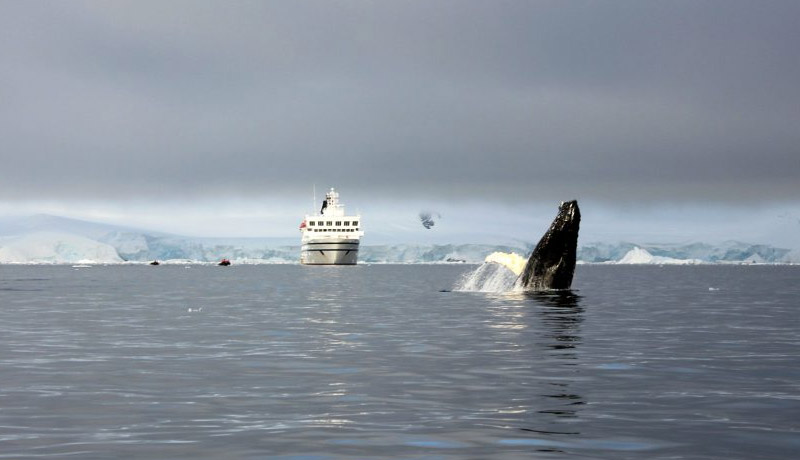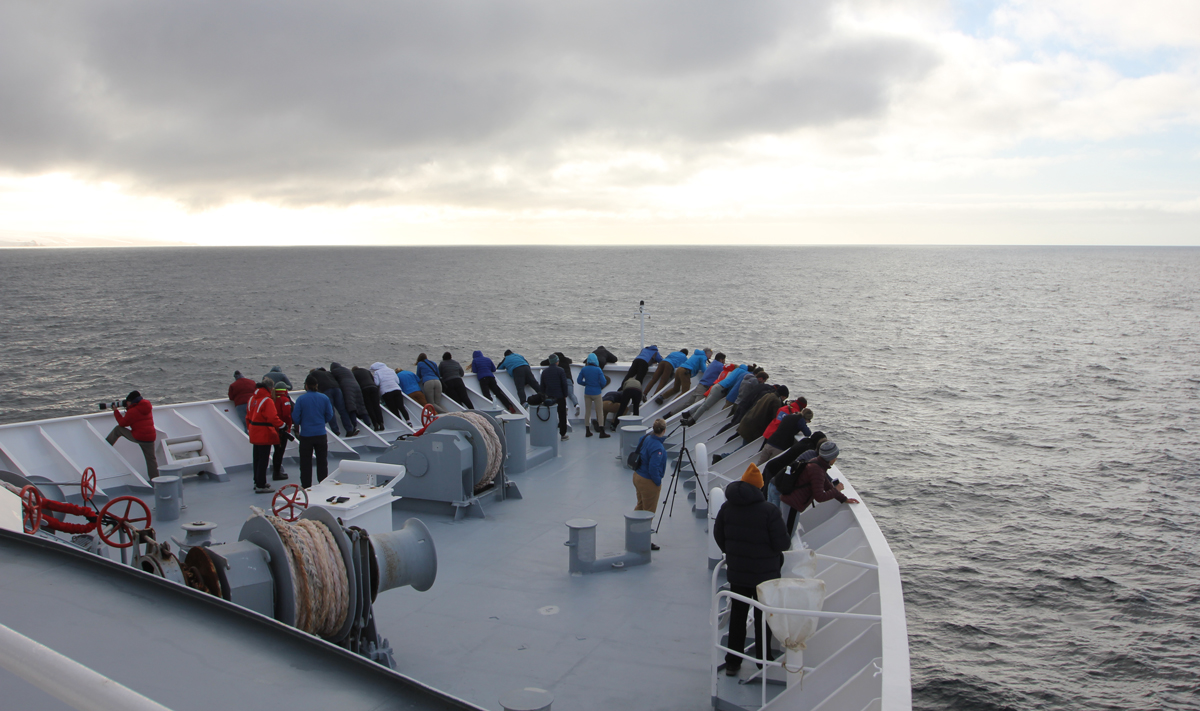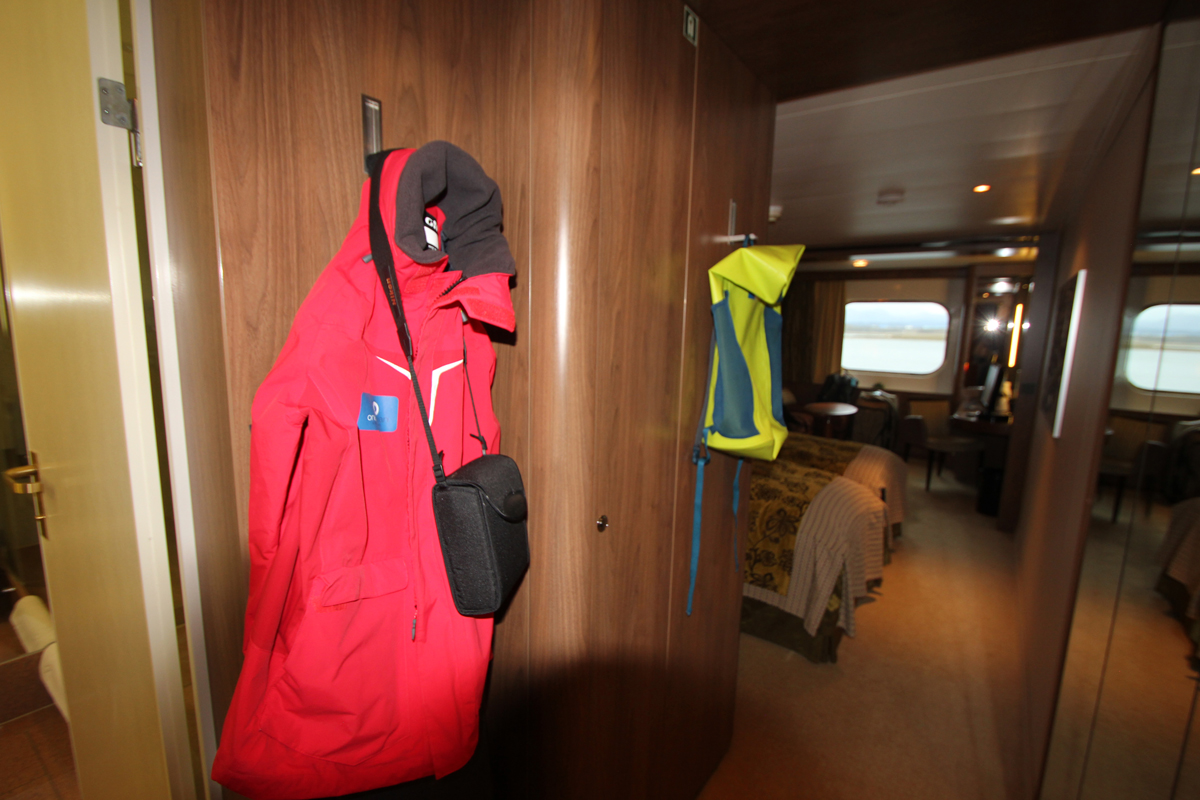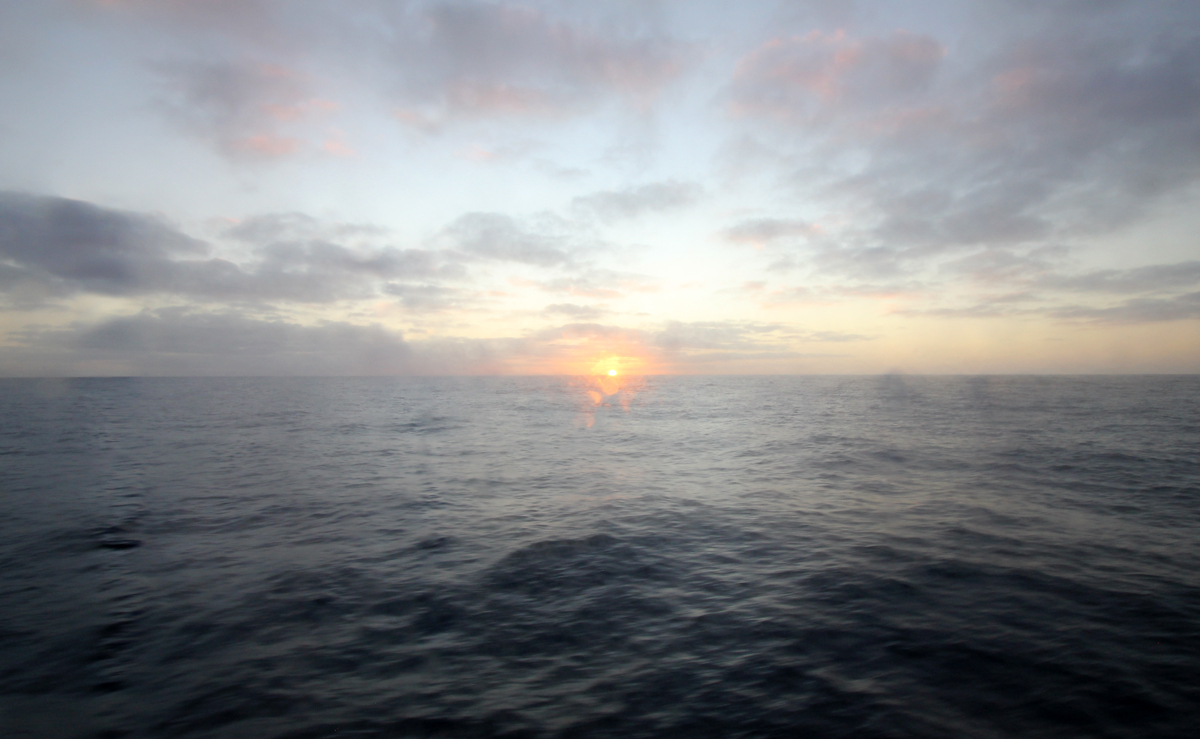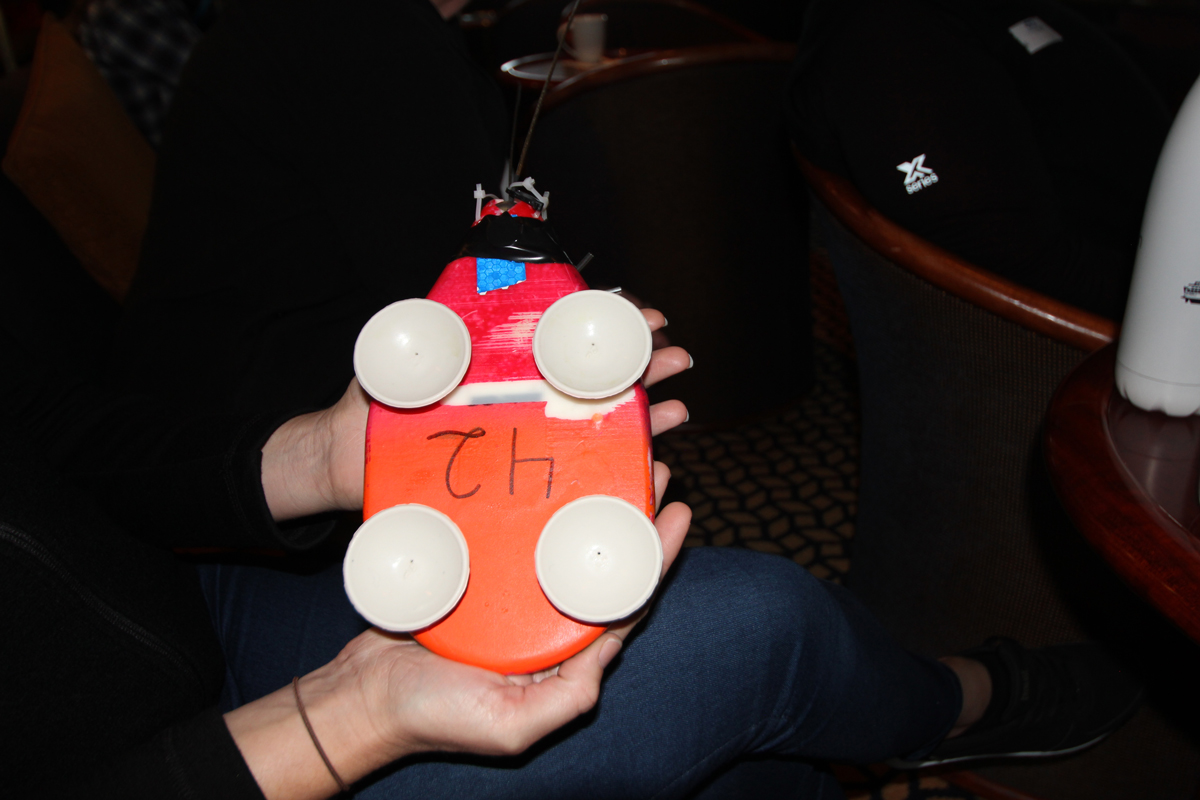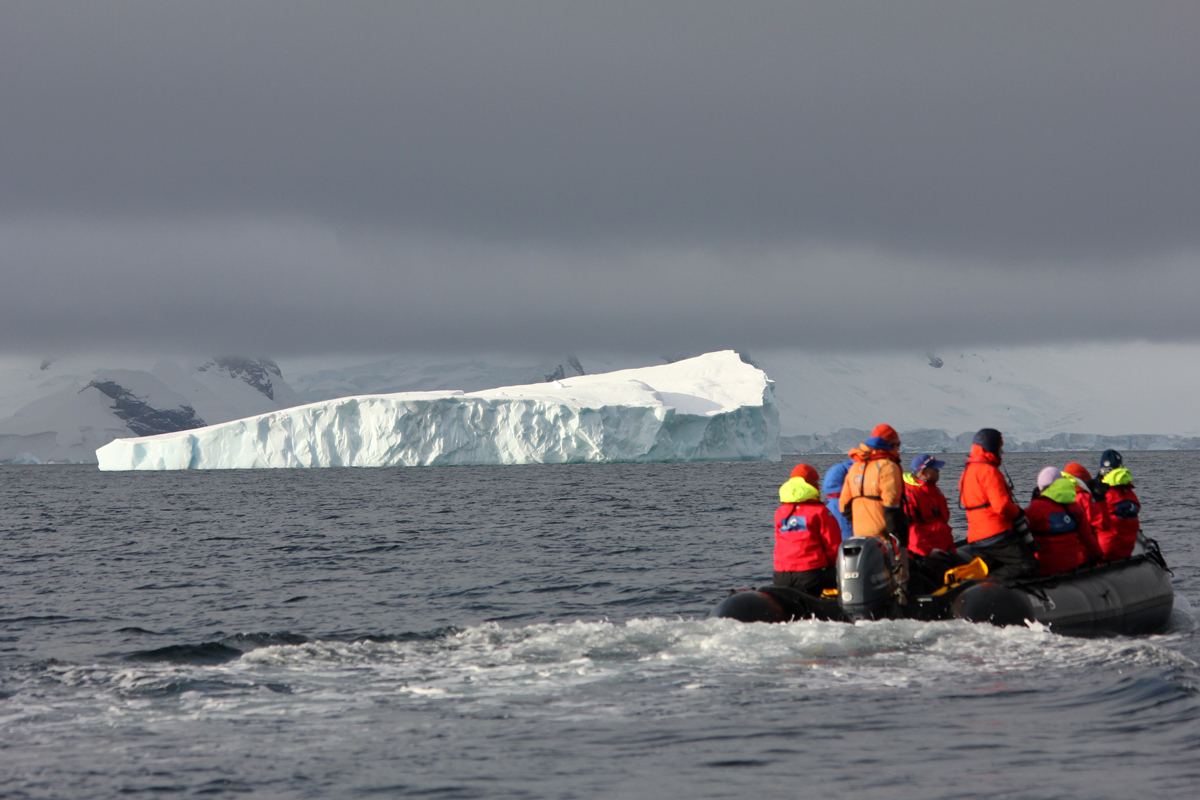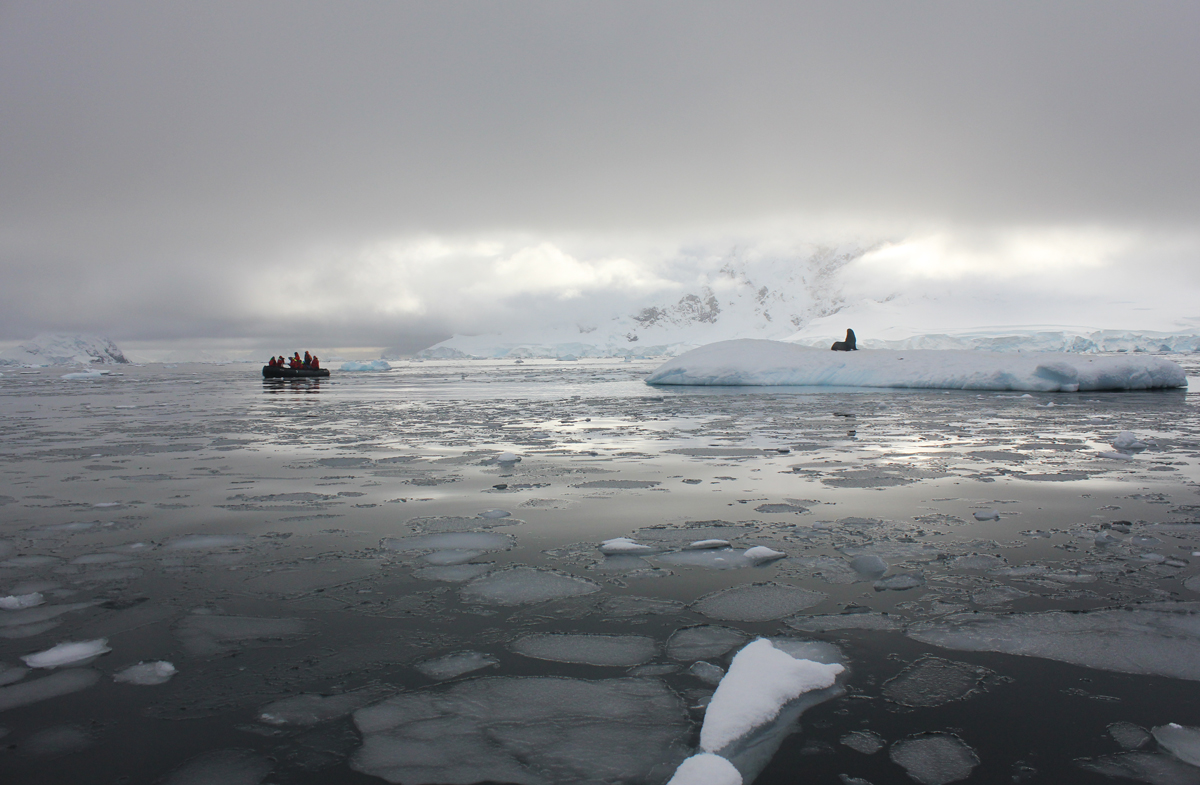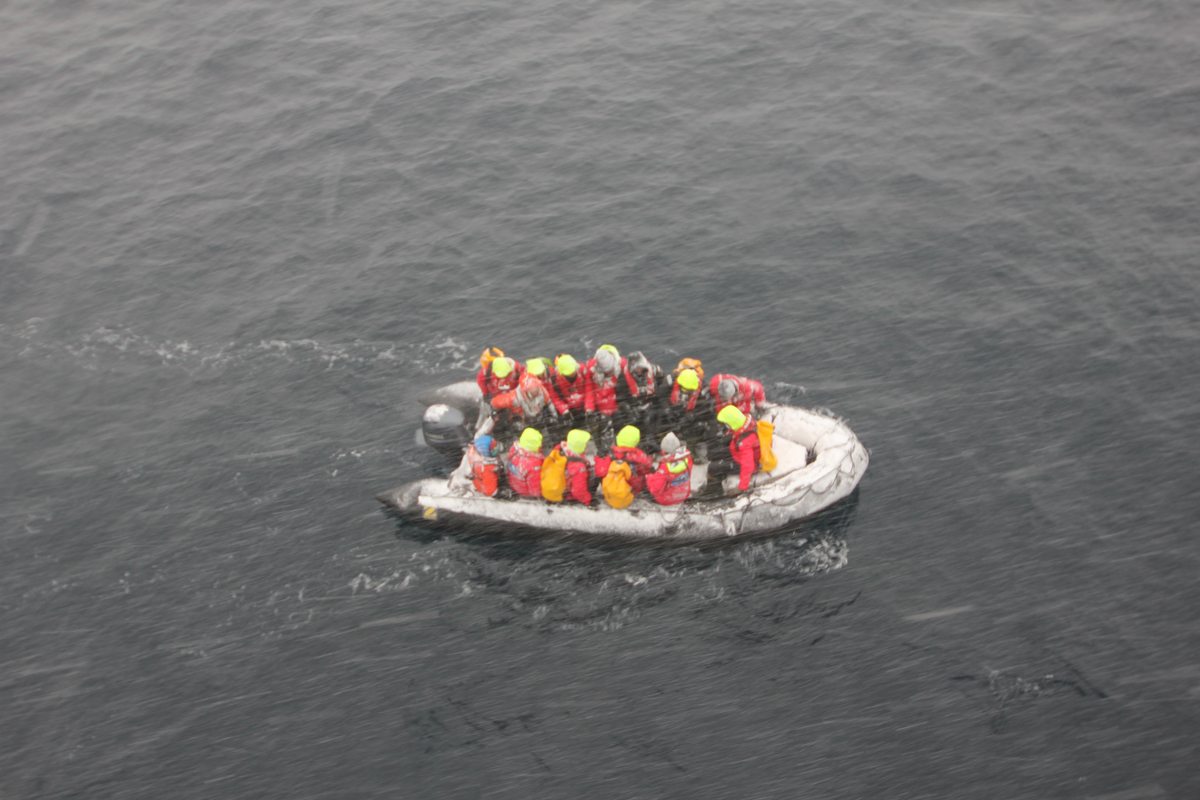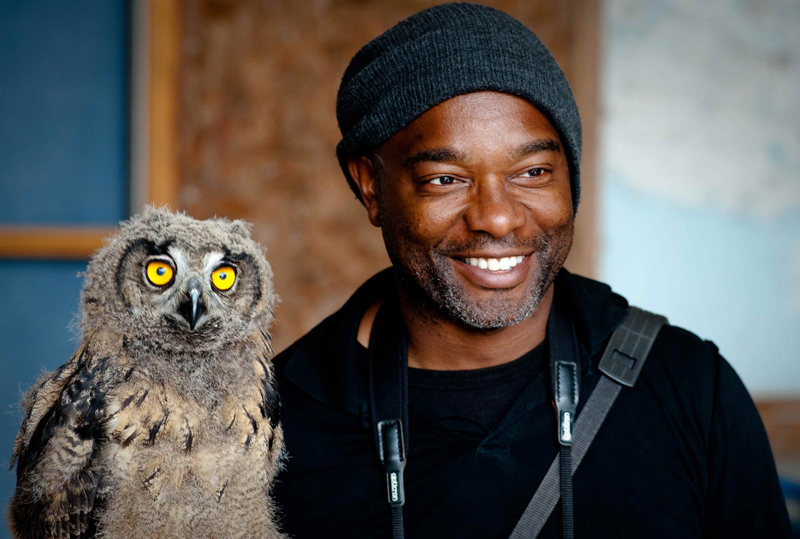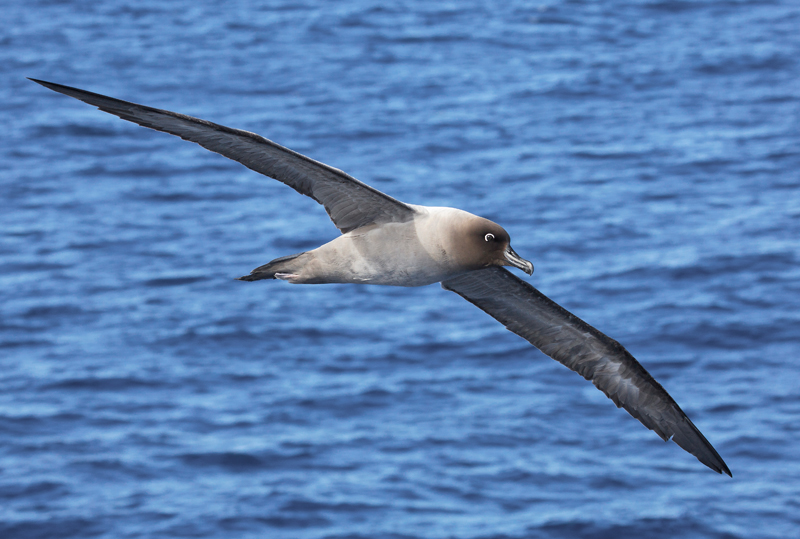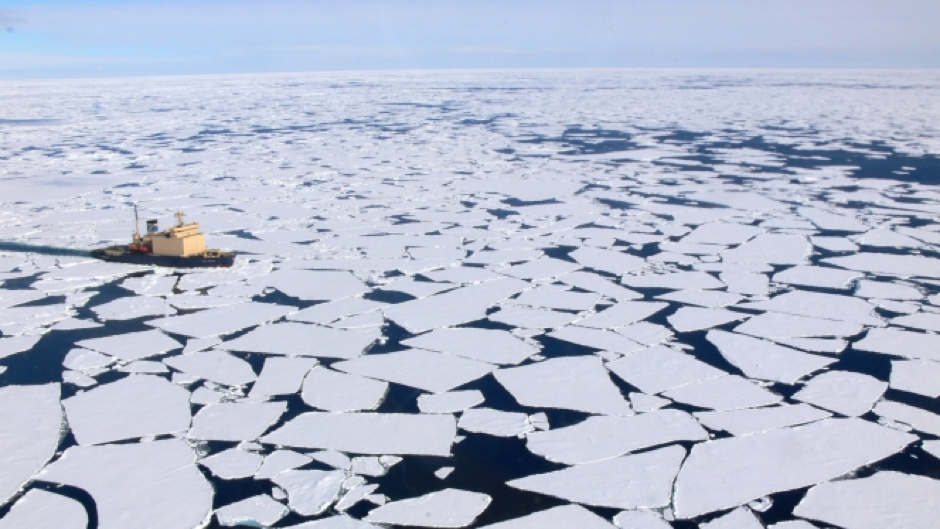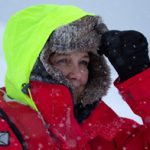 Wildfoot Travel’s Polar travel expert Zoe Savage-Morton climbed aboard The RCGS Resolute recently on a wildlife expedition cruise bound for Antarctica .
Wildfoot Travel’s Polar travel expert Zoe Savage-Morton climbed aboard The RCGS Resolute recently on a wildlife expedition cruise bound for Antarctica .
Here she gives us a first hand account of the trip, along with some great photographs and a list of 20 amazing things you can do in Antarctica.
A journey with One Ocean Expeditions and the RCGS Resolute, March 2019
Over ten days, the Antarctic and its neighbour the Drake Passage was going to be home. It was going to show itself in all its glory, as well as when it’s at its most frightening, darkest and brightest moments, but the Antarctic was also going to be the most breath-taking and extraordinary experience. Only 30,000 people a year have the opportunity to visit the Antarctic, here is what I discovered on my privileged, educational trip of a lifetime to the Antarctica.
100 Orca’s surrounded our ship, breaching, feeding, chasing and surfing the wake. The Whale Scientists onboard were euphoric and bursting with laughter, astounded expressions, with cameras aimed and firing to capture those lifetime moments. It was an incredible experience, and it was only day two. We crossed the Antarctic Convergence, sighted the South Shetland Islands, but not yet reached the Antarctic Peninsula; this was going to be amazing.
Cruise or Expedition?
Lars-Eric Lindblad began taking travellers into regions only visited by scientists and explorers in 1966 – the rest, as they say, is history. The differences between an expedition and a cruise, although simple, are huge. As cruise ships get larger, expedition ships get smaller – the primary purpose of an expedition is to have an up close and personal experience with the scenery, the land, the wildlife and the sea.
An expedition ship along with all the comforts of a cruise ship (comfortable cabins, restaurants, bars, a spa and a gym), will carry a fleet of rigid inflatable boats or zodiacs to get you ashore quickly and closer to the action. They have a supply of kayaks for those wanting to get on the water, rubber boots for safeguarding this precious environment and often supplying outerwear for guests’ comfort.
In addition to the regular crew on an expedition ship, it’s staffed with a group of experienced professional photographers, mountaineers, historians, glaciologists, ornithologists, molecular biologists, whale scientists, marine and wildlife specialists, all of whom are eager to impart their knowledge on you. This is done through presentations, lectures and classes presented in well-designed lecture theatres, filling your days through to mid-evening. After all that, you will happily fall into your bed at 10pm to revive for the next day.
On a cruise, it’s a very different experience. You can lie by the pool, order cocktails and lunch, wander around the decks, perhaps even jog, dress for dinner, watch a show at night, a flutter at the casino, a few rounds on the dance floor and then bed at 1am – no zodiacs in sight.
What do you know about the Antarctic?
Other than what Sir David Attenborough has taught me over the years on the television, I knew very little about the Antarctic. It has always been mysterious and to an extent, unbelievable. Once you have been, you will return with a more profound sensitivity to the issues of polar conservation, supporting my belief that there is no greater teacher than personal experience in anything we do in life. Environmentally responsible tourism encourages such learning.
Do you know about the Antarctic Convergence and how it was thought to protect the Antarctic, the Bio-Diversity of the region, Krill Fisheries and their effect on the day-to-day life within the Antarctic, the long human history within the area? Or about the interesting stories of heroes and cowards, great feats and disappointments? Why didn’t Scott like Shackleton and vice versa? How do humpback whales feed? Where will you find Emperor Penguins? How the polar ice is reducing and what this means to the phytoplankton? You will gain more of an understanding and appreciation after visiting the Antarctic, as you gain a more profound sensitivity and strong desire to make more of an effort to remove the world of plastics and protect the land, its inhabitants and the world that we live in.
RCGS Resolute
A purpose built expedition vessel, the RCGS Resolute is a modern, well appointed, ice-strengthened vessel, offering an authentic Antarctic expedition experience with a touch of comfort, with an extremely qualified and experienced expedition crew. Carrying up to 146 passengers, the staff to guest ratio is 1:4, so there is always someone available to answer your questions on a landing, in a zodiac or onboard.
One Ocean has an open door policy on their ships, meaning when you leave your cabin, you don’t lock it. However, it can be locked once you’re in your cabin for peace of mind. Safes are also available in each cabin. Some fellow passengers during my Antarctica experience didn’t lock their cabin doors or use the safes, which demonstrates the secure feeling the ship has.
There are observation areas both inside and out. Weather permitting, the larger outside areas are used for BBQ lunches and dinners. Small and large spaces mean guests can escape from it all or join in if they wish. There are two separate bar and lounges, and two separate eating areas to offer variety – the bistro is light and airy, a welcome bright option with access to a large deck area at the back.
The number of guests means smaller zodiac groups for landing, information seminars, lectures and classes. A very personal touch is offered when you arrive. An expedition crew member presents your cabin and its features; they then become your point of call for any assistance throughout your journey. Once in my cabin, my expedition gear and aluminium water bottle to be used for the duration of the trip were waiting for me (no plastic cups on board).
Onboard facilities and amenities ensure that there’s enough to keep everyone busy – or not, depending on your preference, and there isn’t a place on board where you can’t get a good view of outside.
A nice touch as you disembark, each guest is given a USB with a copy of the daily trip notes that are on your TV screen each day, along with the onboard photographer’s photos and anything else that One Ocean feel you would enjoy – a prized possession.
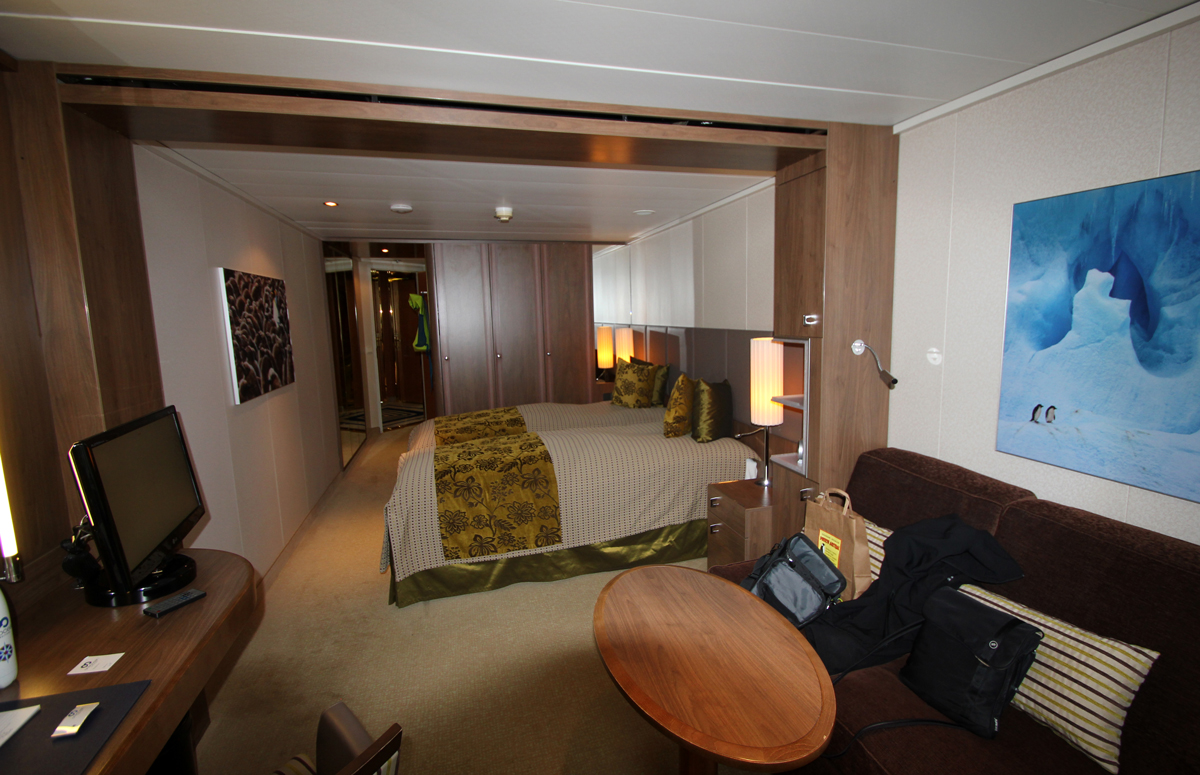 My comfortable and spacious cabin
My comfortable and spacious cabin
Expedition gear – pre ordered, ready and waiting
Crossing the’ dreaded’ Drake
The Drake is known for being the wildest, roughest, most trying and dangerous stretch of water in the world. It’s not the friendliest crossing for those who suffer from motion sickness, which was my biggest concern at the time. Fortunately, travelling south, the Drake was kind. An experienced expedition member, making his 59th crossing advised me, it was the kindest he’d ever experienced, which was a relief and interesting based on his personal experiences. Our return crossing was significantly different. Our experienced captain, expedition crew and the modern stabilisers on the ship made all the difference.
After a smooth arrival and check-in to the ship, ship life as we crossed over the Drake Passage was a preparation and learning experience. We met our fellow travellers, the Whale Scientists onboard and our established and well-experienced Expedition Crew. The quality and bios of this team as a whole were outstanding.
We were in the presence of WWF, California Ocean Alliance, two media teams including the ABC, professional photographers, Mountaineers, Historians, Glaciologists, Ornithologists, Molecular Biologists, Whale Scientists, Marine and Wildlife specialists, in addition to a well-experienced crew and a team of One Ocean Adventure Concierges. We were in the presence of conservation, preservation and sustainable tourism specialists for the next ten days – Ambassadors to the last great wilderness.
Lectures and information sessions take up the two days going south, along with spotting Wandering Albatross, Giant Petrels and tiny Wilson Storm Petrels. It’s recommended to have a good pair of binoculars and to have your camera set in ‘sport’ mode to catch these birds in flight at great speed. We are advised on what to expect when we arrive at the Peninsula, the laws of the land and sea, IAATO regulations, bio-security and how what we do, and how we do it affects our experience.
The two days travelling back across the Drake were full of euphoria, experiences relived, revelling in our achievements with new lifetime friends made.
A peaceful Drake – 3 metre swell
Citizen Scientists
Citizen science is often described as public participation. The scientific research is conducted by amateurs (onboard guests) – nonprofessional scientists helping the real scientists’ outcomes, promoting advancements in scientific research and more importantly, increasing the public’s understanding of the research they are doing, why they do it and the science behind it.
On this occasion, after our encounter with the Orca pod, the Citizen Scientist programme encourages guests to share their experiences. The Whale Scientists onboard wanted us to share our photos, especially those with whales showing clear markings, along with the coordinates of where each photo is taken, the scientists would then use the information in their work.
It’s a good feeling to be a part of something so great and essential, turning my trip to the Antarctic more memorable and special.
A whale tag.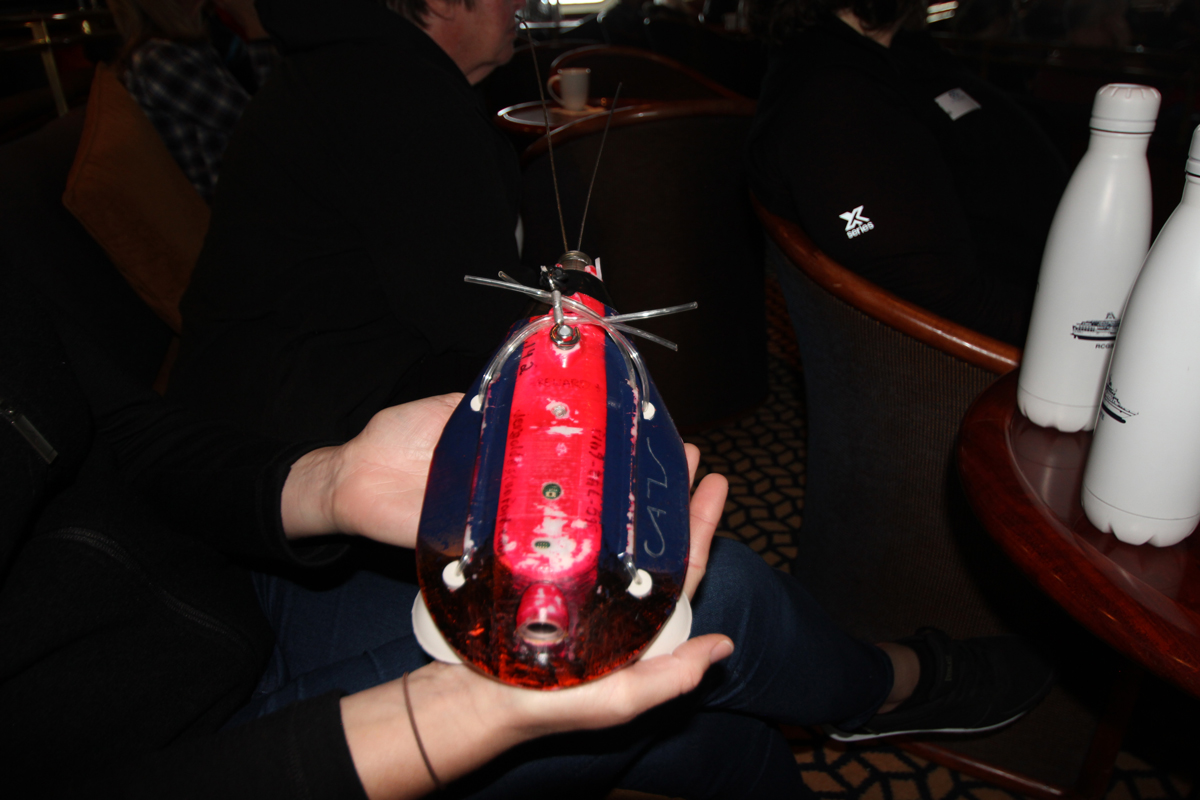
Landings & Zodiac Cruises
Bundled up in your layers and carrying your dry bag full of lenses, water bottle and extra gloves – just in case, is a shaky affair. How to get in and out of the zodiac is very important. The sailor’s grip is going to be your best friend – this is where your fitness level comes in. You need to have some balance, strength and confidence to stand and deal with the swell comfortably.
Calls to disembark onto zodiacs are rotated by deck, allowing each deck a chance to be first out. The first guests are out at 9am and then every 15 to 30 minutes depending on weather and the number of guests.
Once in the zodiac, sitting comfortably on the side, dry bag securely between your feet, you’ll feel invincible as you skim over the top of the Antarctic Sea feeling and hearing ‘bergy bits’ hit the solid base of the zodiac. It’s quite a noise that vibrates through the boat. Landing on the Antarctic Peninsula (an exciting moment I must add), is again an experience until you get your zodiac legs good and proper. When you land, the surface can vary from ice to seawater to slippery rocky outcrops, but rest assured, there’s always a helping hand from an expedition crew member.
Where you land is governed by IAATO, booked months in advance. Landings range from Research Stations, penguin or seal colonies, to ice landings. There are lots of landing rules, all to do with common sense and protecting the environment. As we crossed the Drake Passage, we had a compulsory talk on environmental policies and concerns relating to the Antarctic. If you didn’t attend, you couldn’t land. Your name was marked off on an attendance sheet. The Antarctic Treaty stipulates that only 100 people are allowed to land at any one time and to be on a small ship with only 100 guests onboard at the time, we had no concerns about not getting to land when the opportunity arose.
A zodiac cruise – why would you want to? My first thoughts as we head out in the zodiac is that it’s immense. A substantial wide open space of still and silent iceberg filled water – a tranquil setting. This is soon dispelled by the first breach of a humpback whale, from then on, more whales became visible, we could see and hear the whales’ fins slapping across the waters, breaching and spy hopping, penguins porpoising beside us, solitary fur seals, remarkable cliffs of ice, pancake ice and icebergs. I made sure that I captured every moment possible; it’s too easy to get caught up in the camera, and I was told to put the camera down and enjoy every second of this once in a lifetime trip to the Antarctica. It was wise advice. I put down my camera and relaxed, taking in the surroundings. The bay began to freeze, moody colours arose and heavy clouds.
Our Zodiac driver turned the zodiac engine off. The quiet was beyond silence, we floated silently and listened to nothing. A peacefulness and stillness that’s quite something; it’s serene and beautiful and a fantastic opportunity to reflect. There was a loud bang now and then, similar to the sound of a gunshot – it was the ice cracking and moving, adding to the mysteriousness of the Antarctic.
Kayaking
Kayaking is probably one of the most intimate ways to experience the Antarctic. One Ocean runs a full package aimed at those with a little more agility and fitness and wanting to spend time on the water. It’s an ongoing activity, and by day three, the group are jumping in and out of their kayaks with ease after days one and two, getting used to the requirements and procedures. Therefore, the option to get out for a day isn’t available, as they prefer not to slow the group down with new people joining. What people might not realise is that if you’re kayaking, you’re potentially missing time on the ice. Plus, – 4-8 days kayaking is a costly commitment!
I opted out for kayaking, but those who joined shared their experiences, gliding through the quiet waters, paddling around astounding icebergs, penguins porpoising past, whales breaching close by and a leopard seal spy hopping checking them out, was an inspiring experience.
Antarctic Weather Systems
If you’ve researched a trip to the Antarctic, you will no doubt be aware of the most unpredictable biggest diva of them all – the Antarctic Weather. You will have read that all itineraries are weather dependent, the Expedition Leader and Captain of the ship will decide on a final agenda each day. Daily activities are weather dependent.
We experienced the weather at its best and its least desirable, but it was unforgettable to witness first-hand. During the trip, we encountered a blizzard on our first Peninsula landing, a calm visiting Vernadsky research station, severe weather system crossing back over the Drake, a real batten down the hatches, porthole covered experience. But we lived to tell the incredible tale, and it’s all part of the Antarctic Experience.
A moment of calm in the blizzard
What to Wear
Layers are the key to comfort and warmth. On top, wear an anti-wicking thermal underlayer, fleece and windbreaker, on the bottom, wear an anti-wicking thermal underlayer, trousers (I wore Craghoppers, fleece lined over my thermals). Weatherproof outerwear on top and bottom provided warmth, but bear in mind, if you get wet, you will get cold.
While onboard, wear comfortable trousers or jeans, you won’t be wearing your thermals or outer trousers, as it’s too warm and unnecessary when you head outside for a few minutes to spot a whale or the first sighted iceberg. I headed back to my cabin and changed into jeans before lunch, dinner or a seminar if we were coming straight back in – the beauty of a small ship, nothing’s too far to ‘pop’ back to.
Footwear, as long it’s fully enclosed and non-slip, it just needs to be comfortable. No heavy walking boots are required, and you won’t be wearing your footwear (unless you take your rubber boots and they will have to pass bio-security).
If you’re planning your trip of a lifetime and a cruise to the Antarctic is on your bucket list, get in touch with one of Wildfoot Travel’s polar experts today who will help you plan your experience.
In the meantime, here is my list of 20 things to do in the Antarctic.
20 Things to do in the Antarctic
- Camping under the stars
- Kayaking
- Visit a Science research centre
- Take a Polar plunge
- Ski on snowy mountains
- Cross the Drake
- Practice photography
- Learn about the human and whaling history
- Visit a live volcano
- Scuba Dive or snorkel
- Whale watch
- Become a part of the ’Citizen Science’ project
- Run a marathon
- Hike
- Trek to the South Pole
- Hang out with Penguins and Sea Lions
- Send a post card from Port Lockroy or Vernadsky
- Drink Antarctic fermented vodka @ Verdandsky
- Study and learn with polar experts, Biologists, Scientists, Glaciologists……
- Follow in Scott’s and Shackleton’s footsteps
Zoe Savage-Morton
Polar Expert
A few more photos from Zoe’s Trip
[Best_Wordpress_Gallery id=”60″ gal_title=”Antarctica Cruise”]
